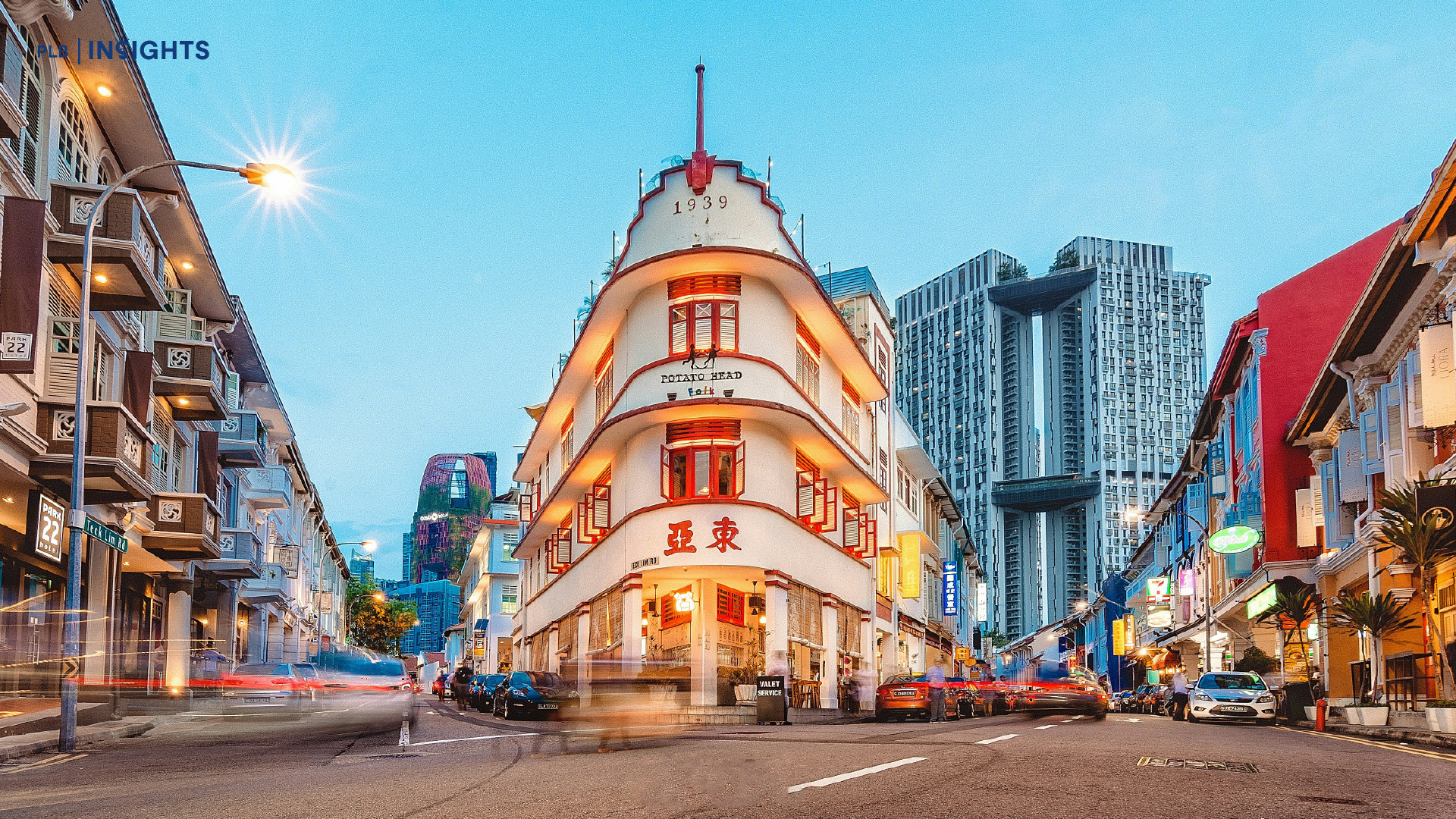
What about a typical running vehicle, but with an electrical touch to it?
What is the first thought that comes to mind when you think about Electric Vehicles (EVs)? The one inescapable problem would be issues such as the charger itself and the space for charging points, and the bigger-sized parking lots that will be needed. An EV on its own may seem attractive, with its affordable price point (incentives given since the government’s all for sustainability) and sleek designs. But what puts many off is how unrealistic the process of renewing its energy can get – EV chargers. As we all know how EVs function – instead of running on petrol or diesel, they are battery-powered instead with electricity running through their veins. Environmentally friendly? Are they really? They are not only selling a vehicle, but they are selling a cleaner lifestyle altogether. Today we’re delving into the EV market and how it may just potentially affect the housing market again. So sit back, relax, and enjoy the ride.
“Climate change is quite simply, an existential threat for most life on the planet – including, and especially, the life of humankind.” – Antonio Guterres, Sec-Gen of the United Nations.
Singapore is not to be insulated from the impacts of climate change. Throughout the years of rapid urbanisation and with our developed yet at the same time, ever-changing built environment, the consequences of climate change are at times more significant than other countries, especially given that our Little Red Dot’s geography sits almost directly along the equator. As Mother Earth heats up, so are things back at home – urban annual mean temperatures have increased from 26.9°C to 28.0°C in the timespan of 40 years (from 1980 to 2020). It definitely does not feel like 28°C since Singapore experiences high levels of humidity. While we have very much identified that climate change will bring about drastic changes to our lifestyles (and not in a very pleasant way), humankind has also come up with a saving grace – electric vehicles. We all know that cars are becoming more common these days and almost every household has a personal form of transportation, the latest figures come up to be 636,180 in 2020.
Statistical data has shown that vehicular emissions in the U.S make up about 29 per cent of the total U.S greenhouse gas emissions. Considering the negligible land size of Singapore as compared to the U.S, with that number of cars on the road, our buildup of carbon dioxide and other greenhouse gases like hydrofluorocarbons are relatively comparable when put in scale with that of the American Big Brother. So in light of this recurring and persistent issue in the country and as part of the Singaporean government’s green initiatives movement, they have mandated that vehicles running on Internal Combustion Energy (ICE) are to be phased out to make way for cars that are powered by cleaner, renewable energy by 2040. Global warming has been happening for decades, and if we do not take action, then we will have to face the consequences that we are already seeing today, but in decades to come, will be much worse.
As part of greener initiatives in shaping a cleaner and more sustainable future for our planet, the government has mandated that ICE vehicles will run its course by the year 2040. Yes, this means goodbye to all petrol and diesel powered engines, forget the gearbox and hello to batteries. It is new terrain, but everything has to start somewhere, right? Our country has just decided to curb the growth of the population for ICE vehicles and begin its extension of a greater push for the EV market. Sustainability movements are no new concepts for Singapore, we have been part of this clean initiative before climate change became an international priority for all. Singaporeans just need to embrace the fact that the EV market will be here to stay, till we find our next best alternative.
Under the comprehensive Green Plan 2030, the authorities have been actively gearing up to ramp up all efforts in pushing the EV market closer to its targets. Previously an undesired market that was said to be a lifestyle changer, the EV market is now our government’s primary focus to promote a greener and more sustainable lifestyle for all Singaporeans and residents alike. Not forgetting the goal of making 8 EV-ready towns by 2024, with its HDB car parks fully equipped with sufficient numbers of EV charging stations to go around for everyone. How these estates are being picked is via the level of concentration of car parks and the existing electrical infrastructure that is able to support the power of such stations. Apart from HDB car parks, there are non-landed residential projects which have also been approved under the movement. For a more general usage for all, several petrol stations around the island are also to be equipped with electrical charging points.
There are many rising companies that are following the green revolution closely, with innovations that will answer the woes of EV owners. As the attraction of the EV market gets higher with the introduction of incentives and low prices, the concern for space and practicality of the charging stations also rises. They come together as a complete package; take one out of the picture and you won’t have a fully functioning EV. The country’s acceleration in the deployment of charging stations across the island city-state is also hindered by a prevailing problem – what about those staying in landed homes? Who will be responsible for the installation of power stations for this community of residents while the others living in private non-landed and public housings get to have charging points installed for them? This issue is bound to arise and it will remain an issue till there is a more affordable solution for all.
You see, landed properties are already privileged as they have the luxury of having their own space and land. Such diverse and community projects are thus not able to go into that of the landed residential enclaves because of land title issues. The government is not obliged on their part to provide one for every landed household that owns an EV. By doing so, they may just stir unwanted tension among the residents themselves. With landed homeowners already having an advantage over the rest of the
95% of households, they are supposedly more self-sustainable as compared to the others, hence the “neglect”.
Let us consider two situations.
Scenario 1: You buy a Tesla and are currently living in an HDB complex with charging stations already implemented in your shared car park and are considering moving on to a landed home.
Homeowners may be hesitant to make the change in housing given that the charging facility will then have to be borne by themselves from thereon. Not just landed housing types, it may be even worse for those who are staying in non-landed residential projects (condominium projects). Why is that so? For non-landed residential projects, they have to go through a more arduous process, while landed homeowners can always just purchase a charging point themselves and have it installed in the comfort of their own home garage or car porch area.
Scenario 2: You are currently living in a landed home and are considering purchasing an EV and planning to downsize your home to a private non-landed enclave instead.
This would bring us back to the issue that was stated in situation 1 whereby there are certain condominium projects that have their proposal to install charging points rejected by the MC ST committee.
Would it then make these projects less desirable for EV owners? Possibly so because this car requires a frequent charge, relative to pumping petrol for common vehicles. That and a charge normally takes more than an hour, as compared to that 5 minutes at the petrol station. That makes a difference, and this is why EV owners will always want their charging stations to be located as close as possible.

QuickCharge wants to make you an energy baron | Business Times
The solution? Making charging points so affordable that it becomes a monopoly for all that have the luxury of owning one, the luxury of owning more space. (heads up landed homeowners, this can benefit you!). In a recent news article published by The Business Times, a newly established Singaporean company has risen among the rest to make a bold statement, that its chargers will start paying for themselves in the span of 8 months (sounds fishy, but we’ll hear them out). These little plugs that wire electricity through the arteries of the vehicle and in that process, power it, can be purchased from the starting price of $1,680, which is one of the cheapest chargers out in the market. They have the higher range ones, which can charge a Tesla from 10% to 90% within a 2-hour period. But for this, it would be a harder pinch on the wallet, with a price tag of $14,600.
“People want to charge their EVs, but that does not mean they themselves should be overcharged.” says an employee of QuickCharge.
This newly launched and fresh new kid on the block of the EV market aims to provide customers with affordable charging stations but with a new twist – they can buy it and lease it out to other EV owners for use at a decent price for those who do not have the privilege and enough space requirement to own one, just by listing themselves on the QuickCharge app. This puts the homeowners that do not have to deal with space constraints on a more inclusive platform and at a slightly higher advantage than the rest. From this strategy, it is a win-win situation for both EV owners and EV charging stations, with affordable rates. Investing in a charging unit can earn owners up to $3.40 every hour it is being used by an external visitor/ customer.
This model is also known as the charge-and-earn model, where you help power up your fellow EV comrades with your charging station at home (acting as an energy proprietor). It is a relatively new concept and more regulations have yet to be released regarding how it will be executed. We presume that homeowners keen to embark on this side hustle would probably have to be registered with the relevant authorities first, ensuring credibility.
To illustrate this news better, we have come up with two scenarios again.
Scenario 3: You are an EV owner staying in a landed property.
What this means for you is that you can purchase a set of the aforementioned affordable charger and rent out the usage to other EV owners to charge up their cars. This can act as a side-business of your own that you can closely monitor, with owners being able to earn up to $3.40 for each hour that it is rented out for others’ use.
This marketing strategy will need to be closely monitored and regulated by the relevant authorities to prevent anyone from taking advantage of the system to make a lifeline out of it and that charging rates will remain fairly constant for all to enjoy.
Scenario 4: You are an EV owner staying in a non-landed property (can be both private and public housing)
If you fall under this scenario, then what it means is that you can potentially “buy” power from your neighbours themselves, at affordable rates.
With such a system implemented, what this means is that charging stations may no longer be that big of an issue and that homeowners may not necessarily have to plan their property portfolio in such a way that a charging station has to be included in the picture, thus levelling the playing field for all residential types. But would landed homeowners be on a slight advantage? There’s no doubt about that. They have already given this slight advantage from the start, with them having the opulence of space as compared to the others. What makes this bunch of people more exclusive is that they only make up 5% of all registered households. Since they fork out for the chargers first, it is only justifiable for them to enjoy more perks.
The target audience of this newly-launched start-up company is mainly the private residential market. Talking about being left behind or the forgotten bunch, they are now the main focus for start-ups in the journey towards an EV-centric Singaporean community.
Will this disrupt the basic fundamentals of the market? No one knows, this is unchartered waters that we are venturing into and honestly speaking, given how new and fresh this industry is to all of us, there are many unknowns still out there waiting for us to discover and unravel one by one. But in the meantime, whatever floats your boat, let it float.
The housing market and the market for EVs may just be closely related. A decision to purchase an EV may very well just affect one’s housing plans and property portfolio. Investors may also start looking at projects and developments that are more EV-friendly, with more EV parking lots included for residents. As the global sustainability movement gets underway and people become more proactive in selecting the right choices to benefit both themselves and the environment, our innovation and ideas must also pace up with this global widespread phenomenon (which we are slowly moving towards).
Before, landed homeowners are finding it increasingly difficult to find levelled ground between that of public and non-landed private housing residents in terms of economic woes when it comes to the topic of EV charging stations. However, it may all be different now with the rise in such companies and their ideals of making the EV market a more inclusive body of change for everyone.
Conclusion

10 years ago, we would not have seen this day; 10 years later, we will say the same. No one knows what lies out there with these new innovations that have yet to be seasoned in our lifestyles, just like how the concept of a robot with more than just a conscience is that hard to grapple with and understand. But what is certain is that such green initiatives are here to stay for every day, an improved version of yesterday’s prototype is generated, all for the sake of humanity and for the future generations to reap the benefits of – a healthy and clean Earth like we have never seen before for everyone. We will soon enter into a state of euphoria for the EV industry (or more like a new energy industry).
As part of a more sustainable living for all, Singapore also makes use of solar panels as one of the main sources of electricity, with 95% of our power sources still coming from the burning of natural gas (given our land scarcity issue). The electric grid generates electricity from solar panels before transmitting it through all the smaller-scaled power grids across all households in Singapore. The downside is that solar panels are not able to control the amount of electricity that you would like to generate, meaning no specific amount will be generated at the primary source at any point in time (only through the grids can it then be specified). Authorities at SP Group are trialling for EVs to act as both a storage and producer of electricity supply for the power grids. How this works is that during lows, the vehicles can act as a source of energy with their batteries and when at a high, they can become the storage for excess electrical energy. This is a win-win situation for both households and car owners, given that the energy can be used to power the car and the housing in Singapore. As the EV market gets more robust in our Little Red Dot, we foresee there to be the increment of power supply and distribution issues.
While this is still in its infancy stages, we can expect great solutions to be coming out from EVs this time round, together with careful measures on part of the authorities in monitoring the cost and effect of the EV market.
There is always a give and take until sound resolutions can be made. Maybe this struggle will not last long, especially in land-scarce Singapore, where land is not the answer to everything. Engineers are probably looking for technological solutions to have faster-charging stations at this point when you are reading this. And on top of that, better efficiency when it comes to space. Who knows, but maybe in the foreseeable future, we will be able to charge up our EV batteries as fast as how we used to refuel the petroleum or diesel fuel for our ICE vehicles at lower costs, or maybe EV owners will bring along Xiaomi chargers for long trips up North instead of petrol cans and by then, any housing type will return to being on levelled ground, once again. Here’s to greener roads, fresher air and quieter trips with lower propulsion noises, a healthier Singapore for all.
If you have read till the end, and have any questions or thoughts regarding the whole EV market and how it may potentially affect your property portfolio planning, you can always reach out to our trusted team here. PropertyLimBrothers, signing off.









